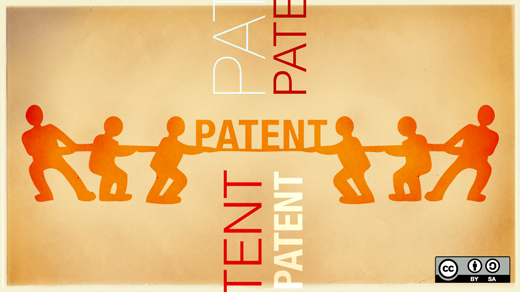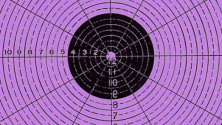Late last month, as you’ve likely read by now, the US Senate Judiciary Committee (SJC) abruptly pulled consideration of a legislative patent reform package from consideration. For this year, at least, the prospect of addressing abusive patent litigation through Congressional action is on ice.
The move by the Committee disappointed, even outraged, a broad coalition working for legislative reform.
Reaction came not just from many in the technology and Internet innovation sector, which have been at the forefront of reform efforts. Consumer and civil society groups (EFF, Engine Advocacy, Public Knowledge) voiced deep concern.
Reflecting the wide swath of the US economy that is affected by abusive patent litigation, the view of many in the mainstream of American business was that the SJC "chose special interests over jobs on main street." Retailers noted that "withdrawing the patent reform bill is a victory for patent trolls." They were joined by restaurant owners, home builders, credit unions, hotels and lodges, the gaming industry, and the online travel industry, just to name a few.
The case for reform grows
Despite the (in)action by the SJC in May, the case for legislative reforms grows.
In testimony before a House Subcommittee earlier this Congress, Janet L. Dhillon, Executive Vice President, General Counsel of retailer JCPenney, said that when she joined the company 4 years ago, JCPenney had no patent cases. Since that time, however, "the company has had to defend or settle over two dozen patent infringement lawsuits that have nothing to do with the products JCPenney actually sells. Keep in mind this number does not include those claims that are settled upon receipt of demand letters."
What has JCPenney been sued for? Essentially, using many of the technological tools that have enabled it to be an Internet retailer and responding to customers who are using new avenues for buying: "[W]e have been sued for displaying catalog images and having drop down menus on our website, activating a gift card at the point of sale, browsing a website on a mobile phone, or enabling a customer to put her purchases in an electronic shopping bag or cart. We have been subjected to multiple claims for providing information regarding our store locations to a mobile phone."
The experience from just one company suggests the significant overall costs to the US economy and innovation. The White House "Patent Assertion and Innovation" Report found that since 2005, the number of defendants sued by patent trolls has quadrupled. In 2012, they sued over 7,000 defendants and sent thousands more threat letters. This activity cost the US economy $80 billion in 2011, and productive companies made $29 billion in direct payouts. Moreover, trolls no longer only sue large tech corporations. Small and medium-sized businesses of all types, including startups, are now the most frequent targets. In 2012, trolls sued more non-tech companies than tech, spanning a wide range of American businesses.
As my colleague, David Perry, pointed out, 2012 was a banner year for patent litigation abuse. "NPEs filed more than half of 2012's patent suits, and their power isn't waning."
And it got worse in 2013. According to Lex Machina, "2013 saw a clear continuation of the trend towards increasing patent litigation."
Why?
-
Courts have failed to address the asymmetry of the economics of patent litigation. In theory, courts could exercise the current discretionary "exceptional case” standard in the statute to shift fees in unreasonable cases. But in its recent decision, Octane Fitness v. Icon Health & Fitness, the Supreme Court effectively said that it should be ‘rare’ that fees are awarded. Unreasonable cases, far from rare, are nonetheless harmful. Legislation passed in the House last December that was under consideration in the Senate would have required district courts to shift fees whenever a prevailing party shows that a non-prevailing party’s position or conduct was not "objectively reasonable." Moreover, many who seek to abuse the current patent litigation system set up asset-free, ‘judgment proof’ shell companies to avoid any chance of paying fees.
-
Patent litigation abusers use the discovery process to magnify the costs associated with patent litigation abuse, seeking discovery of every document possible, by any person inside the defendant’s operations. This can involve huge quantities of documents and cost millions of dollars to produce. They do so especially in jurisdictions that facilitate this type of expensive discovery.
Abusers know that they can use discovery to increase both the pressure to settle and the settlement amount regardless of the merits of their case. And because many patent assertion entities have no operating business of their own, and therefore no comparable scope of production, they face no corresponding burden in litigation. Thus, discovery in patent cases is used as a ratchet to hike up one side’s litigation costs and extract a settlement.
-
The lack of clarity in pleadings, where patent litigation abusers use claim uncertainty and vague patent boundaries to threaten infringement. As one witness – the Deputy General Counsel for Yahoo! Inc. -- testified last year, "More often than not, when a complaint is filed against [us], we are left guessing as to the scope of the case. ... A review of those complaints [filed against Yahoo] reveals that ... just 16% identified the asserted claims of the patents. ... Because asserted patents are typically much narrower in scope than one of our products, . . . the relevant information is the accused feature, and that is only provided about 30% of the time. Finally, only three patent complaints against us since 2007 provided both asserted claims and accused features of products. Thus, only in about 4% of our cases do we have genuine insight at the pleading stage into what those cases are about. In the other 96% of cases, we must guess.”
As a result, there is growing consensus that, as Federal Trade Commission (FTC) Chairwoman Ramirez said last year, "[f]laws in the patent system are likely fueling much of the real costs associated with PAE activities. ...effective monetization of low quality patents imposes a de facto tax on productive economic activity with little or no offsetting benefit for consumers. High litigation costs add to the problem by allowing PAEs to coerce targets to pay license or settlement fees that are detached from the economic value of the patents at issue. In short, PAEs exploit underlying problems in the patent system to the detriment of innovation and consumers."
Broad and growing support for patent reform
The sudden action against the patent reform legislation in the Senate was especially stunning given the expanding and diversified support for legislative reforms.
For example, 2013 ended on a high note, with House passage of HR 3309 (the "Innovation Act") by an overwhelming 325-91 vote. In a rare show of bipartisanship, big majorities from both parties supported passage. The bill included some important provisions to address fee shifting, pleadings clarity, discovery abuse, and others directly relevant to the flaws in the current system outlined above.
In the weeks before the Senate pulled consideration of the bill, more than 500 organizations wrote to SJC Chairman Leahy and Ranking Member Grassley urging Senate passage of reforms included in the Innovation Act. "Abusive patent litigation is killing small companies, chilling employment and growth of all companies, and stifling the economies of a wide range of industries nationwide," the coalition wrote. "Instead of investing in new jobs and services, businesses must fight frivolous claims and overly broad lawsuits made by patent trolls against a range of technologies and commonplace ideas."
Even state Attorneys General weighed in, with 42 chief legal officers writing to express "supportive of structural federal patent litigation reform which would create an environment in which abusers of the patent enforcement system cannot thrive." And in his State of the Union address, the President renewed his pledge to protect innovators from frivolous litigation.
With this unprecedented call for reform, there was bipartisan work that was getting close on a set of reforms that, in many ways, mirrored the Innovation Act. Lead by Senators Schumer (D-NY), Cornyn (R-NY), Grassley (R-IA) and others, including Feinstein (D-CA), Blumental (D-CT), Lee (R-NY), and Chairman Leahy (D-VT).
But the rug was abruptly pulled out from those working to promote progress. The changes under consideration—which had been narrowed down considerably, and did not include key issues like calculation of damages, standard of willfulness, venue and ‘covered business method’ expansion—were too much for entrenched interests with a stake in the current, flawed system. Those interests included universities, some of which are engaging in tactics that aid and abet PAEs.
As FTC Chairwoman Ramirez noted in her speech last year, there is no one single silver bullet to addressing patent abuse. It requires a multi-front strategy. And the broad effort continues, for the moment, on other fronts, including the states where nearly a dozen states have passed legislation to combat deceptive demand letters; at the FTC, where they are looking into PAE abuse (and which I’ll be posting an update on soon); and through the Administrative channels of improving patent claims and overall quality.
I see this as a pause in Congressional action. The frustration, indeed anger, is well placed. But the battle is not over and winds of change are still with us. Look for the action to continue next year, regardless of how the mid-term elections turn out.







7 Comments